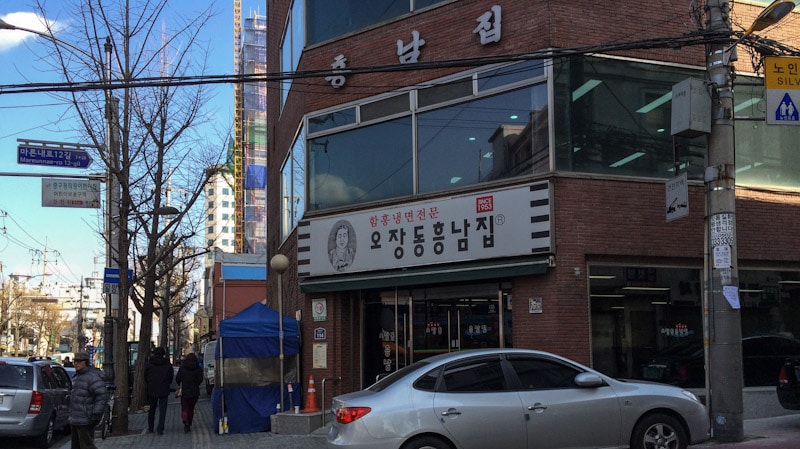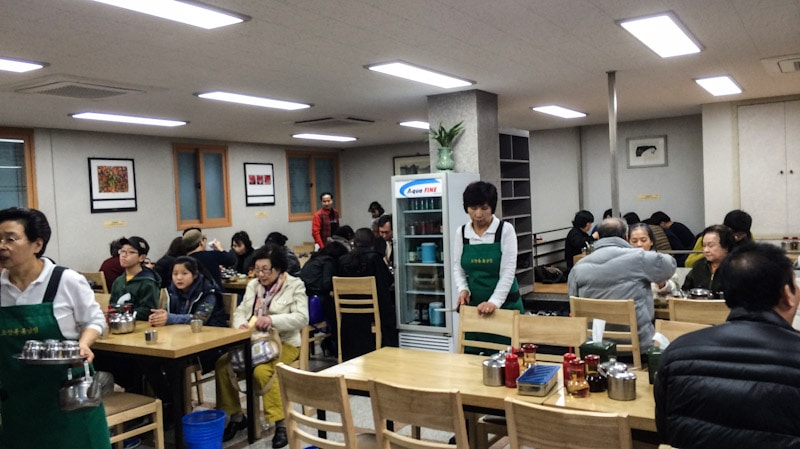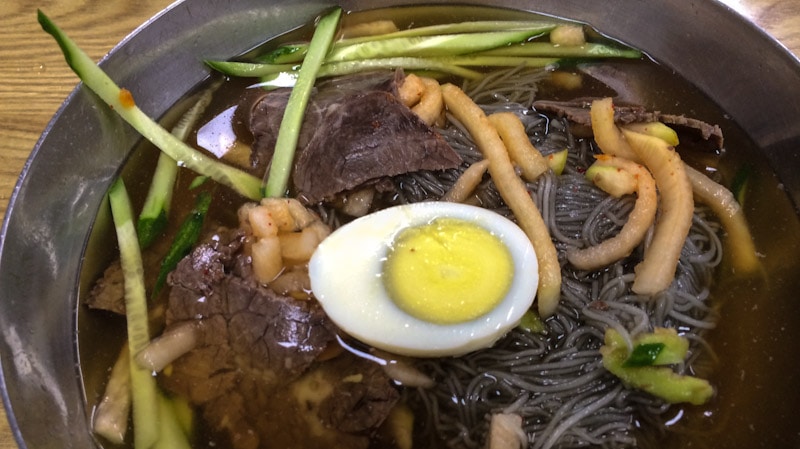
Ojang-dong Heungnamjip has been serving up delicious bowls of authentic naengmyeon, a cold North Korean dish made using long and thin buckwheat noodles. The restaurant, which has been in operation since 1953, is located at Ojang-dong’s Hamheung Naengmyeon Alley, a street featuring a group of famous restaurants specializing in naengmyeon dishes.

If you are not Korean, then odds are you may have never even heard of naengmyeon. The noodles of naengmyeon are long and thin and usually made from the starches of buckwheat, potatoes, or sweet potatoes.
There are many varieties of naengmyeon, with the most popular types being mul naengmyeon and bibim naengmyeon, both which are served at Ojang-dong Heungnamjip.
Mul naengmyeon is a variety of the dish that originates in Pyongyang, North Korea. The noodles of this dish are made using the starches of buckwheat, which is less chewy and easier to eat. It rarely needs to be cut before eating.
Bibim naengmyeon is a variety of the dish that originates in Hamheung, North Korea. The noodles of the dish are made using the starches of potatoes or sweet potatoes. The texture of these noodles is very chewy and is often cut before eating to help with swallowing. Also added to the dish is raw skate, a type of fish from the ray family.

On this visit, the Mul Naengmyeon (9,000 won) was ordered. The cold buckwheat noodle dish served here in a stainless steel bowl looks simple but is surprisingly complex with sweet, sour, and savory flavors and interesting textures.
The noodles, made from buckwheat, were long, thin with a pale grayish color. If this is your first time eating naengmyeon, then it is recommended to have the noodles cut with a pair of scissors into smaller pieces to help with eating and swallowing. If you aren’t sure what to do, usually one of the staff members will help you out and cut the noodles for you. Even though the noodles are made from buckwheat and suppose to be easy to eat, they were extremely chewy and difficult to bite through.
The noodles were placed in a tangy chilled beef broth. This special and unique broth is made using ox bones and then slow cooked for hours.
Added on top of the noodles were julienned cucumbers, sliced radish, a boiled egg, and cold boiled beef.
The cucumbers and radish added a great crunch to each bite along with a much needed kick of salt. The boiled beef was extremely tender which added a great contrast of texture between the chewy noodles and the crunch of the vegetables.
If you need a little more flavor, be sure to add a few dashes of vinegar, chili oil, or spicy mustard sauce and mix everything together. All the layers of flavors and textures come together to make one great tasting dish.
The majority of people eating at Ojang-dong Heungnamjip are Korean, which usually means the food here is good and authentic (not touristy). If you are in the Dongdaemun area and looking for a delicious bowl of naengmyeon, then Ojang-dong Heungnamjip is highly recommended.
Hours
11:00-21:30
Closed on the second and fourth Wednesday of each month, Seollal and Chuseok.
Directions
Option 1
Take Subway Line 2 or Line 5 to Euljiro 4-ga Station (Exit 8).
Continue for 210 meters and left onto Mareunnae-ro.
Continue 200 meters to reach the restaurant on the right.
Option 2
Take Subway Line 2, Line 4, or Line 5 to Dongdaemun History & Culture Park Station (Exit 6).
Continue 240 meters to reach the restaurant on the left.
Ojang-dong Heungnamjip
114, Mareunnae-ro, Jung-gu, Seoul, South Korea
Map
Last Updated on Dec 26, 2021